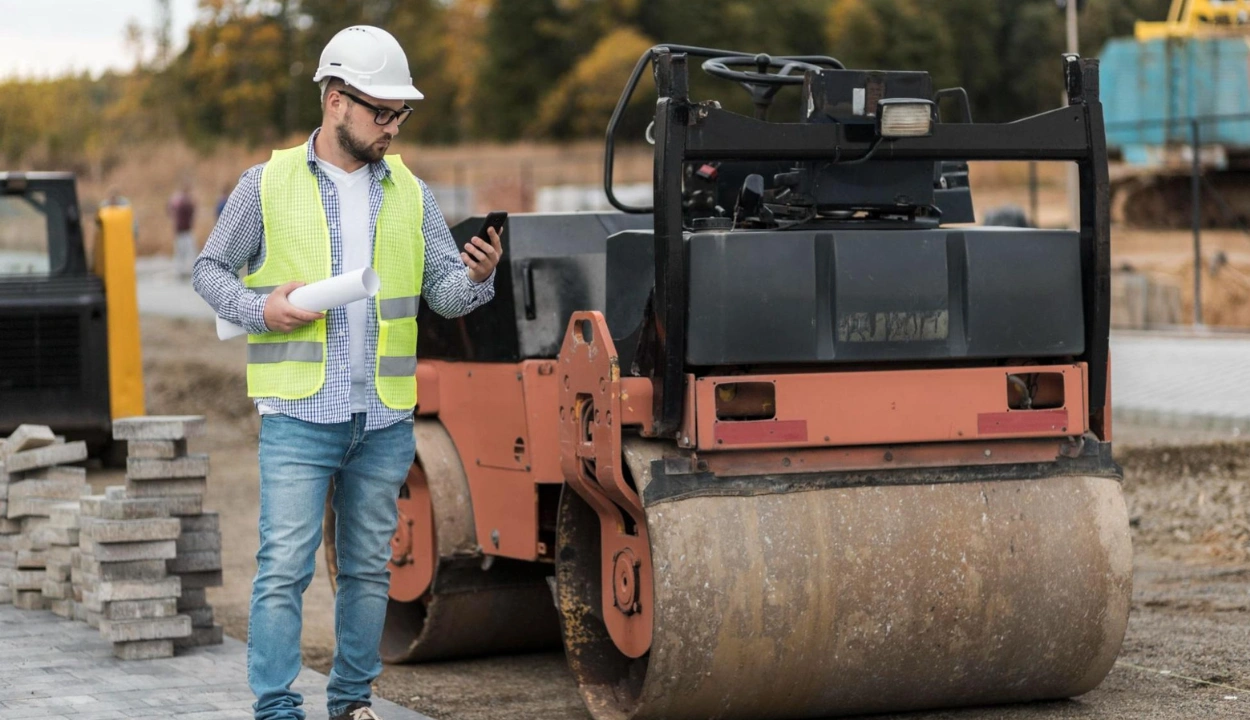Top 10 Issues in the Construction Industry & Their Solutions
There are numerous Issues in the construction industry, including a shortage of employees and difficulties related to implementing rules and regulations.
These issues impact overall effectiveness and project success.
Before jumping into solutions, it's important to understand these problems and strategize accordingly.
This article will discuss the top 10 most common issues in the construction industry and their solutions.
Brief Overview
The construction industry, a cornerstone of economic development valued at over a trillion dollars, is grappling with several significant challenges that are not just hurdles but potential roadblocks to its overall work rate.
Some of the significant issues in the construction industry are:
- Cost Overrun
- Project Delays
- Slow Adaptation to Emerging Technologies
- Inadequate Equipment Maintenance
- Lack of Communication
- Poor Planning and Forecasting
- Document Management
- Cash Flow Problem
- Safety and Compliance
Top 10 Issues in the Construction Industry
1. Projects Cost Overruns
Causes of Cost Overruns
Cost overruns, one of the common issues in construction industry, often due to budgeting issues, unexpected issues, and scope changes, can significantly jeopardize a project's stability.
McKinsey reports that 98% of large projects exceed budgets by over 30%.
Inaccurate estimates, inflation, and unforeseen site conditions add financial strain, which impacts profit margins, causing delays, and threatening stability.
Solutions to Cost Overruns
Detailed project planning and accurate cost estimation are essential for combating cost overruns in construction projects.
Allowing precise financial oversight and control, construction equipment management software can significantly enhance budgeting and cost tracking.
2. Project Delays in Construction
Causes of Project Delays
Number 2 on our list of issues in the construction industry are project delays, a major concern for project managers, often stem from poor planning, weather conditions, and supplier issues.
McKinsey reports that 77% of construction projects experience at least 40% delays. Improper planning can cause missed deadlines, while bad weather can halt progress completely.
Supply chain issues further complicate matters by causing material shortages and project standstills.
Each delay affects the project's schedule and increases costs which puts financial pressure on everyone involved and risks the project's overall success.
Solutions to Project Delays
Solutions to project delays often rely on effective project management and advanced scheduling tools.
Wise techniques and digital tools can manage delays from unforeseen events, delayed materials, and blockers from prerequisite tasks.
Clue helps improve project efficiency by resolving scheduling conflicts and reducing downtime, which helps anticipate and mitigate delays.
This software provides real-time updates and accurate tracking to ensure equipment is maintained properly, keeping projects on schedule and minimizing disruptions.

3. Slow Adoption to New Technologies
Reasons for Tech Reluctance
Reluctance to adopt new technology in construction often comes from high costs, lack of training, and resistance to change.
While new tools can stretch budgets and require training, sticking to outdated methods can lead to lost productivity and relevance.
Companies that do not adopt innovation risk falling behind in a dynamic industry.
Solutions to Tech Reluctance
To overcome technology reluctance in construction, start by identifying needs and setting clear goals.
Choose user-friendly technology such as a construction asset tracking software, which boosts performance by integrating easily with existing systems and reducing manual errors.
It can also help monitor performance regularly and gather feedback.
With only 27% of contractors receiving real-time data and fewer using automation tools, they learn from best practices and case studies to drive innovation and optimization.
4. Lack of Communication on Construction Sites
Communication Challenges
Communication challenges, one of the major issues in construction industry, arise from scattered channels and language differences.
Misalignment between office staff and on-site workers can cause delays, extra costs, and problems like unrealistic timelines and missed tasks due to ineffective communication of updates and changes.
These problems can impact project results, causing delays, extra costs, and quality issues.
Poor communication can also worsen safety risks and strain relationships among those involved.
Fixing these issues is essential for smooth project progress and successful outcomes.
Solutions to Communication Challenges
Impactful communication is key in construction project management. Centralized platforms ease information sharing and keep all team members aligned.
Regular meetings address issues and clarify misunderstandings promptly.
Clue facilitates collaboration with its centralized management and easy integration. It ensures everyone has the latest information to avoid delays.
Set up a clear communication chain and choose the right methods to move projects forward more efficiently.
5. Labor Shortage in Construction
Factors Contributing to Labor Shortage
The construction industry faces a labor shortage due to an aging workforce, insufficient skilled workers, and a negative industry image.
The skilled labor gap is particularly pronounced, with earlier retirements and fewer young recruits.
The National Center for Construction Education and Research predicts that 41% of the workforce will retire by 2031.
Challenges related to skilled labor include perceiving construction work as physically demanding and less attractive than other industries.
A smaller, less experienced workforce impacts project duration and cost which increases work time and expenses.
Solutions to Labor Shortage
Regarding the labor shortage problem in the construction industry, attention must be paid to the problems associated with training and the industry's attractiveness.
Appropriate training results in improved compliance and reduced working injuries, thus increasing output and reducing employee turnover.
6. Poor Planning and Forecasting
Effects of Poor Planning
Poor construction planning leads to resource misallocation and project delays, directly affecting financial stability.
Misallocated resources cause inefficiencies, while delays increase labor and material costs. In every 10 seconds, companies lose $1 million due to poor planning.
Inadequate planning and forecasting lead to unachievable goals that disrupt productivity and cause losses from incorrect budgeting.
Poor communication among stakeholders worsens these issues that results in missed details, misinterpretations, costly disputes, and lower project quality.
Solutions to Poor Planning
Solutions to poor planning issues in construction industry include utilizing advanced forecasting tools which engage customers early to provide regular updates, and maintaining clear accountability and consistent processes in planning and execution.
An equipment maintenance software can improve precise planning, reduce project overruns, and offer centralized management.
It integrates easily with existing systems and can be customized to meet unique project needs.
With Clue, you get efficient asset tracking and management and quick, risk-free implementation.
7. Inconsistent Document Management
Challenges in Document Management
Documentation is an important element in construction, but manual documentation might fall short in a busy work environment.
Disorganized documents, lost important files, and difficulty accessing information pose significant challenges in document management.
Poor document management can result in major errors, such as missed project deadlines.
In terms of compliance, missing or inaccurate records can result in legal repercussions.
Solutions to Document Management Challenges
Digital document management systems are crucial for solving issues in construction industry by making processes smoother and more accessible.
It saves time searching for the file and allows the team members to access the documents from anywhere.
Clue provides robust features for managing work orders, tracking maintenance history, and generating real-time reports, which can indirectly assist in maintaining organized records.
8. Maintaining Proper Cash Flow
Causes of Cash Flow Problems
Payment delays, cost increases, and financial mismanagement are common causes of cash flow problems in construction.
Late payments can disrupt essential expenditures such as:
- Wages
- Subcontractor fees
- Supply costs
Increased costs and financial planning failures exacerbate these issues. Such problems can halt project progression and lead to stagnation.
Many construction firms face these challenges due to their invoicing methods, which often do not manage cash flow effectively.
Solutions to Cash Flow Problems
Managing the working capital ratio is crucial for maintaining a healthy cash flow. Invoicing delays or changes in payment terms can strain finances, especially given the issues in the construction industry.
Billing at the end of a project may create cash flow issues, while progress payments provide a more consistent income. Automating invoices and promptly addressing change orders can help mitigate these challenges.
Budgeting is essential for financial forecasting, and Clue integrates seamlessly with a wide range of ERP and financial software systems.
This integration allows you to connect Clue with tools such as SAP, Oracle, Viewpoint Vista among others.
By integrating with these systems, Clue helps businesses streamline invoicing, financial planning, and cash flow management, thereby enhancing financial stability and operational efficiency.
9. Inadequate Equipment Maintenance
Consequences of Poor Maintenance
Neglecting equipment maintenance leads to extended repair times and reduced lifespan. Poorly maintained equipment is prone to faults, which result in costly repairs and increased expenses for urgent fixes and replacements.
Regular maintenance helps avoid these problems to ensure smooth operations and keep projects on track.
However, the bitter fact is that even today, 42% of companies need to recognize the need or importance of project management.
Solutions to Equipment Maintenance Issues
Regular maintenance schedules can prevent equipment failures and ensure longevity. Issues in construction industry, such as equipment breakdowns, can be mitigated with equipment maintenance software, which optimizes these schedules accurately.
It simplifies processes, minimizes downtime, and enhances operational efficiency, making it the right software for managing issues in the construction industry.
10. Ignoring Safety Compliance
Importance of Safety Compliance
Safety compliance is paramount for protecting worker well-being and project success.
Rigorous maintenance schedules, optimized through advanced management software, are essential for preventing equipment failures and reducing hazards.
Staying informed of Occupational Safety and Health Administration (OSHA) standards is crucial.
Adhering to these safety standards, organizations can significantly lower accident risks, mitigate legal and financial liabilities, and foster a culture of safety.
Solutions to Ensure Safety Compliance
In 2021, construction was the leading cause of workplace deaths in the U.S., accounting for 21% of all occupational fatalities.
This highlights critical safety issues. Regular safety training and audits are essential to identify risks and reinforce safety regulations.
Implementing a safety management solution can simplify compliance monitoring for issues in construction industry by providing real-time insights and automated reporting.
These features help ease the audit process and track training progress while ensuring a safer working environment.

What Future Trends Will Shape the Construction Industry?
Emerging Trends in Construction
New trends are emerging within the construction industry as it adopts AI, sustainability, and modular construction.
- AI in Project Management: Improves capacity with forecasting and automation.
- Sustainability: Embraces green building practices and energy-efficient technologies.
- Modular Construction: Boosts proficiency and reduces resource use. Seventy percent of firms anticipate increasing the use of modular methods by 2024.
Conclusion
In summary, addressing the key challenges in the construction industry is essential for achieving better project results and improving efficiency.
Issues like cost overruns, delays, and labor shortages can be effectively managed with solutions like Clue.
Clue's advanced features help boost productivity, optimize resource management, and keep companies competitive in today’s dynamic market.
FAQs
What causes cost overruns in construction projects?
Cost overruns often result from poor budgeting, unexpected issues, and scope changes. Accurate cost estimation and wise project planning are important to minimizing overruns.
How can construction delays be managed effectively?
Proper scheduling and project management tools can manage project delays. Solutions like Clue strengthen scheduling accuracy and reduce downtime, which helps to keep projects on track.
Why is there a reluctance to adopt new technologies in construction?
Reluctance comes from high costs, lack of training, and resistance to change. Overcoming these barriers involves choosing user-friendly technologies and providing adequate training.
What are the best practices for improving communication on construction sites?
Centralized platforms and regular meetings can improve communication. Using tools like Clue helps ensure all team members are aligned and updates are efficiently shared.
Transform Your Equipment Management












